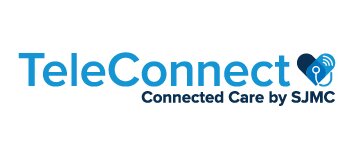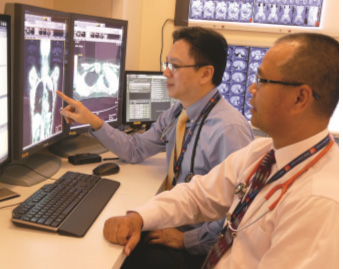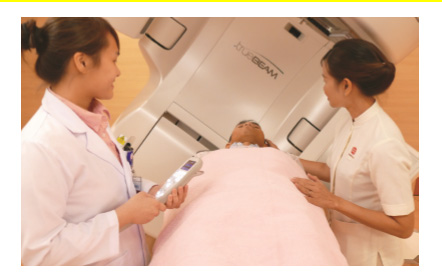Nasopharyngeal Carcinoma
Nasopharyngeal Carcinoma (NPC) is the 3rd most common cancer among Malaysian men and the 4th most common cancer among all Malaysians.
The incidence rises with age, particularly between the ages of 50 and 60.
Leading the Way in Nasopharnynx Health
At Subang Jaya Medical Centre, our nasopharyngeal cancer services and technologies provide patients with the best care possible.
As a comprehensive cancer centre – SJMC Cancer and Radiosurgery Centre is recognised for its expertise and leadership in advanced cancer treatment and as a one-stop cancer centre designed to provide patient-focused care in a comfortable and safe environment.
It is our hope that this brochure will provide you with relevant information and help to answer some of the questions you may have. This brochure serves as a guide only and its contents are not to be taken as medical advice. You will still need to discuss with your doctor the best treatment option for you.
Our Commitment
Doctors and staff members at the centre are committed to enhancing each patient’s well-being, both physically and emotionally. Their goals are to ensure all patients receive the highest quality care, whether seeking prevention and screening services, receiving treatment or coping with a cancer diagnosis. Support groups and other services provide emotional and psychological benefits that can ease many aspects of their daily life.
About Nasopharyngeal Carcinoma
Nasopharyngeal carcinoma (NPC), commonly called nose cancer is a cancer that occurs in the nasopharynx. The nasopharynx is located behind your nose and above the soft palate. It is connected to the middle ear via the eustachian tube.
Thus, tumour at the nasopharynx may lead to blockage of this tube leading to hearing impairment.
The exact causes of NPC is still unknown. The disease is related to certain risk factors.
Nasopharyngeal carcinoma is more common in men than it is in women.
This type of cancer more commonly affects people in Southeast Asia and Northern Africa.
Nasopharyngeal cancer can occur at any age, but it’s most commonly diagnosed in adults between the ages of 40 – 65 years old.
This common virus usually produces mild signs and symptoms, such as those of a cold. Infections of the nasopharynx may predispose patient to nasopharyngeal carcinoma.
Having a family member with nasopharyngeal carcinoma increases your risk of the disease. Researchers are currently identifying the gene associated with NPC.
Chemicals released from the steam when cooking salt-cured foods, such as fish and preserved vegetables, may enter the nasal cavity, increasing the risk of nasopharyngeal carcinoma.
Stay Informed
Please consult our Health Screening Centre regarding possible screening tests & packages.
Signs and Symptoms
In its early stages, nasopharyngeal carcinoma may not cause any symptoms. Possible noticeable symptoms of nasopharyngeal carcinoma include:
- A lump in your neck caused by a swollen lymph node
- Blood in your saliva or phlegm
- Bloody discharge from your nose
- Nasal congestion
- Hearing loss or tinnitus
- Headaches, facial numbness, double vision
Diagnosing Nasopharyngeal Carcinoma
Getting the right diagnosis and determining whether your cancer has spread is the first step to getting the best treatment. At SJMC, our team of experts work together to gather as much information about your cancer as possible to guide our approach to care.
Medical History & Physical Examination
The doctor will take a complete medical history and thoroughly examine the head and neck area, feeling for abnormalities, looking at the inside of the mouth and throat, and using mirrors and lights to examine hard-to-see areas.
Endoscopic Examination
In an endoscopic examination a flexible, lighted tube called an endoscope is used to examine the nasopharynx. Suspicious areas will be biopsied.
Imaging Tests
Imaging tests such as CT, MRI, or ultrasound may be required to gain more information about the location and extent of the tumour. PET / CT scans have also been used for staging.
Positron Emission Tomography (PET) builds up clear and detailed pictures of the body. An injection of a glucose solution containing a very small amount of radioactive material is given to the patient. The PET scanner will detect and show the areas where the radioactive substance is being used in the body. Cancerous cells show up at areas where glucose is being used by growing cells.
Making Decision About Treatment
It is very important to have a skillful, multi-disciplinary team to treat NPC as there are numerous treatment options.
SJMC brings together the most advanced resources to manage the treatment of patients with early or advanced NPC.
Our multidisciplinary team includes ENT specialists, clinical oncologists, radiologists and pathologists working together to create the most effective treatment plan.
Our doctors make sure that each patient thoroughly understands factors such as the stage and grade of his/her tumour and the range of treatment options, as well as the potential side effects of each therapy.
Doctors here can guide patients through the sometimes complicated choices posed by these factors.
Early Detection Means High Cure Rate
Early nasopharyngeal carcinoma symptoms may not always prompt you to see your doctor. However, if you notice any unusual and persistent changes in your body, such as hearing loss and blood in sputum, that don’t seem right to you, please consult your doctor.
Treatment Choices
Surgery
Surgery is not often used as a treatment for nasopharyngeal carcinoma. It may be used as a salvage treatment for patients with small local relapse.
Chemotherapy
- Chemotherapy given concurrently with radiation therapy
When the two treatments are combined, chemotherapy has been shown to enhance the effectiveness of radiation therapy.
• Chemotherapy after radiation therapy
It is used to attack any remaining cancer cells in your body.
• Chemotherapy before radiation therapy
In some instances, chemotherapy may be needed to decrease the size of the tumour prior to radiotherapy.
Radiation therapy
Radiotherapy or radiation therapy remains the primary treatment for NPC. Radiotherapy uses high-energy x-rays to kill cancer cells.
Treatment Choices
Advanced techniques at SJMC includes Helical TomoTherapy and Volumetric Arc Therapy
In the past, there was difficulty for radiation beams to target the tumour precisely, which meant healthy tissues were also damaged during cancer treatment. Today, new systems used at SJMC take radiation therapy into the 21st century.
The helical TomoTherapy system couples three-dimensional imaging with innovative intensity–modulated radiation therapy, or IMRT, to target mainly the tumour, while sparing the healthy tissues around it.
Volumetric Arc Therapy (VMAT) is an advanced form of radiation treatment using Varian TrueBeam STX also called RapidArc radiotherapy technology to deliver fast and accurate treatment.
Supportive Care
All our patients have access to the SJMC Cancer & Radiosurgery Centre Patient and Family Resource Centre, which offers a wide array of support and educational services including:
- Oncology Nurse Educator
- Patient & Family Liaison Officer
- Counsellor
- Pain Management Specialists
- Cancer Careline
Programmes which patients can participate in include:
- Diet workshops
- Support group/activities
- Yoga & exercise workshops








